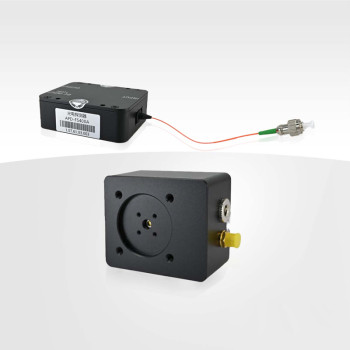| Coad | 671347 | Type | Avalanche Photodiode | |
| Dimension(mm) | 82.5 x 64.0 x 28.0 | Wavelength(nm) | 400 - 1000 | |
| Bandwidth (MHz) | 10 | Input Method | Fiber Input | |
| NEP | 0.11pW/√Hz | Rise Time | 40.0ns | |
| Input Interface | Multimode fiber with FC/APC connector | Photosensitive Area | - | |
| Responsivity | 0.5A/W@850nm | Noise Voltage | 18.0mVpp | |
| Gain | 1.4 x 10^7V/W | Maximum Output Amplitude | 3.2V | |
| Saturation Optical Power | 0.23μW | Detector Type | Silicon photodetector |
LBTEK’s APD Avalanche Photodetectors offer higher sensitivity and lower noise compared to standard PIN photodetectors. They feature an integrated thermistor that allows bias voltage adjustment to compensate for temperature-induced variations in the multiplication factor (M-factor), making them ideal for low optical power applications. In general, avalanche photodiodes (APDs) use an internal gain mechanism to enhance sensitivity by applying a high reverse bias voltage to create a strong electric field. When an incident photon generates an electron-hole pair, the electric field accelerates the electron, causing impact ionization and generating secondary electrons. This electron avalanche produces a gain factor of several hundred, denoted as the multiplication factor M, which is a function of reverse bias voltage and temperature. Typically, the M-factor increases as temperature decreases and decreases as temperature rises. Similarly, the M-factor increases with higher reverse bias voltage and decreases when the reverse bias voltage is lowered.
The LBTEK Si Avalanche Photodetector has a spectral response range of 300/400–1000/1100 nm and is available with either fiber input or free-space optical input. It features an integrated thermistor that adjusts the bias voltage across the APD to compensate for temperature-induced variations in the multiplication factor (M-factor), providing improved output stability in environments with temperature fluctuations.
















Product evaluation
%High praise
There are comments